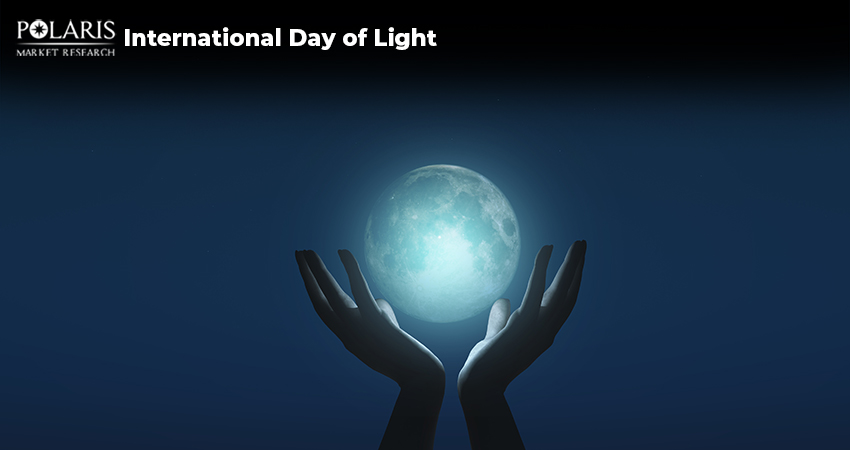How Has Light Shaped the Course of Human History?

It goes without saying that light is a crucial element of life. From enabling sight to regulating biological rhythms and powering essential processes like photosynthesis, light influences how we live, heal, work, and connect. It shapes our environments, enhances our well-being, and plays an increasingly vital role in driving sustainable innovation.
What makes light such a powerful force across so many aspects of life? In this blog, we’ll journey through the fascinating history of light and explore how light has shaped human progress across industries and cultures. Also, with the International Day of Light as a timely backdrop, we’ll reflect on its significance and why it continues to inspire innovation, awareness, and appreciation for the role of light in our lives.
Light: A Foundation for Modern Living
In today’s modern world, it’s easy to take lighting for granted. Yet, behind every flick of the switch lies a brief history and complex web of innovation. Lighting today is embedded into almost every aspect of our environment, from homes and streets to schools, workplaces, and farms. What started as a basic utility has now evolved into a multifaceted tool for improving comfort, promoting health, and enabling high-tech applications.
A Brief History of Light
The history of light is closely intertwined with the evolution of human civilization. In prehistoric times, early humans relied on sunlight during the day and fire at night. Back then, the controlled use of fire marked a pivotal moment in human development. As developments continued, ancient civilizations like the Egyptians and Greeks started using oil lamps and torches to illuminate sacred places and their homes. The Middle Ages saw the advent of beeswax candles, which offered a cleaner and more refined alternative to earlier lighting methods.
The Industrial Age brought with it gas lamps, which quickly gained popularity for lighting up streets and homes across growing cities. In the late 19th century, the introduction of the incandescent light bulb ushered in the era of electrical lighting. The 20th century saw further development with the emergence of fluorescent and halogen bulbs, which offered greater energy efficiency. In the 21st century, the rapid adoption of LED technology transformed lighting into an intelligent, sustainable solution central to modern infrastructure. This journey, from primitive flames to fiber optics, reflects humanity’s relentless pursuit of progress through the power of light.
Hidden Influence of Light in Daily Life
As mentioned earlier, light is an integral part of modern life. Here are just a few areas where it’s quietly transforming the way we live:
Healthcare: Hospitals now use lighting systems that mimic natural circadian rhythms, helping patients heal faster and improving working conditions for staff. Medical lasers, a form of light, are used in medicine for a wide range of applications, including surgery, cancer treatment, and cosmetic procedures.
Workspaces: Workspaces often use adjustable office lighting to improve concentration and reduce eye strain. This is especially useful for people spending long hours at desks or screens.
Agriculture: Controlled light environments in greenhouses allow crops to grow faster, even in regions having poor natural sunlight. This plays a crucial role in addressing global food security challenges.
Public Safety: Smart lighting allows cities to save energy while improving visibility. The use of these lighting systems reduces accidents and enables faster emergency responses.
Spotlight on the International Day of Light
The International Day of Light is celebrated annually on May 16. The day commemorates the first successful operation of the laser in 1960 by physicist Theodore Maiman. But the day is more than a celebration of a scientific achievement. It’s a global reminder of how light influences progress in science, culture, art, education, and sustainable development.
Organized by UNESCO, the International Day of Light encourages:
- Broader awareness of the importance of light-based technologies
- Support for scientific collaboration and innovation
- Educational programs globally to inspire future generations of scientists, designers, and engineers
Each year, the International Day of Light has a specific theme. For 2025, the theme is "Light, Innovation, Society," emphasizing how light and its related technologies drive innovation across various disciplines, enrich human experiences, and serve as powerful tools for developing collaborative solutions to societal challenges.
Role of Light in Sustainability
In an era marked by climate change and growing environmental awareness, light has emerged as a key enabler of sustainability. Here's how:
Energy Efficiency: LED lighting consumes up to 80% less energy than traditional bulbs. The low energy use significantly cuts down electricity use and carbon footprints.
Solar Lighting: Off-grid communities use solar-powered lighting to provide access to education. The use of these systems reduces the risk of fires from kerosene lamps and enhances overall safety.
Smart Controls: Automated lighting systems in homes and buildings adjust based on occupancy or daylight. This ensures energy is used only when necessary.
Glimpse into the Future of Lighting
Going ahead, lighting is all set to become more dynamic, personalized, and integrated with other technologies. Some exciting directions include:
Light Fidelity (Li-Fi): Li-Fi is an emerging wireless communication technology that employs light waves to transmit data. It promises a faster and more secure internet compared to conventional Wi-Fi.
Augmented Reality & Holography: Light manipulation is central to technologies that overlay virtual elements in real space. These technologies are gaining increased traction in gaming, training, and retail.
Bioluminescence and Nature-Inspired Design: Researchers are exploring how organisms like jellyfish and fireflies produce light. These research initiatives are influencing the development of organic lighting materials.
Final Thoughts
Light is woven into the fabric of our lives in ways we often overlook. Initiatives like the International Day of Light offer an opportunity to pause and appreciate this powerful element in both scientific and cultural contexts. As innovations and advancements continue, light will only become more central to shaping our future.

